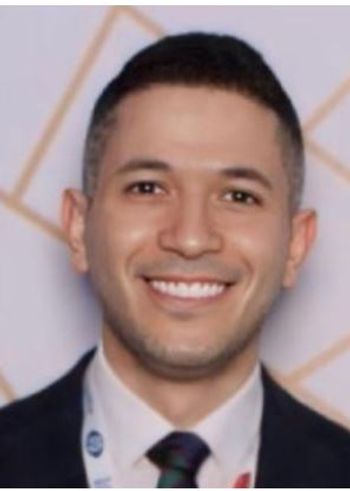
Eosinophilic Esophagitis: Which Rx When and for How Long?
Our short case-study quiz will test your recall of current standard of care for EoE.
[[{"type":"media","view_mode":"media_crop","fid":"43446","attributes":{"alt":"","class":"media-image media-image-right","id":"media_crop_2304922535243","media_crop_h":"0","media_crop_image_style":"-1","media_crop_instance":"4734","media_crop_rotate":"0","media_crop_scale_h":"0","media_crop_scale_w":"0","media_crop_w":"0","media_crop_x":"0","media_crop_y":"0","style":"height: 317px; width: 400px; float: right;","title":" ","typeof":"foaf:Image"}}]]A 25-year-old man presents to the clinic with progressive dysphagia to solids. He says that his symptoms began approximately one year ago. Initially, he would experience difficulty swallowing about once per month, but the frequency has increased to twice weekly. He avoids certain foods for fear they will lodge in his esophagus-particularly breads and meats. He has no problems swallowing liquids. He had eczema as a child and his only current medical problem is seasonal allergies, for which he takes an over-the-counter antihistamine. He undergoes an upper endoscopy which demonstrates concentric rings and white plaques throughout the esophagus (Figure). Biopsies are taken from the mid- and distal esophagus. His peak eosinophil count is >100 eos/hpf.
How should you initially manage this patient?
Please leave your answer below; for answser and next question,
Answer: The first step in managing a patient with suspected eosinophilic esophagitis (EoE) is to start a course of proton pump inhibitors (PPI) for 8 weeks. PPI have known antisecretory effects, but also have anti-inflammatory effects in EoE. PPI can reduce eotaxin-3, a powerful chemoattractant involved in the pathogenesis of EoE. Between 30% and 50% of patients will experience clinical and histologic response to PPI.1,2 If there is a response to acid suppressants, consider keeping these patients on PPI indefinitely. There are currently no data to support once daily versus twice daily dosing for maintenance therapy. Since a once daily regimen is easier to adhere to, this may be the preferred course of action, especially if patients can remain in remission taking the single dose.
The patient is prescribed PPI twice daily for 8 weeks but shows no clinical or histologic response.
What should be the next step in management?
Please leave your answer below; for answser and next question,
Answer: Following a PPI trial, first-line treatment in adults with EoE is a topical steroid. There are two formulations available in clinical practice, fluticasone and budesonide. Neither one is FDA-approved for treatment of EoE. They are administrated twice daily and response appears to be dose-dependent. The fluticasone dosage for adult patients with EoE is 880 mcg twice daily and the adult budesonide dosage is 1 mg twice daily. The efficacy in controlled trials is 50% to 60% for fluticasone and slightly higher for budesonide. Of note, the two medications have never been compared in a head-to-head study. Both are considered good treatment options after a course of PPI therapy.
Let’s assume this patient clinically responds to topical steroids. Repeat endoscopy with esophageal biopsies confirms response. Should he remain on maintenance steroids or should steroid therapy be discontinued?
Please leave your answer below; for answser,
Answer: This is a common clinical scenario, yet whether a patient should remain on corticosteroid treatment indefinitely remains controversial. There are data to suggest that the natural history of untreated EoE involves formation of esophageal strictures and this leads to more frequent food impactions. In one study, virtually all untreated EoE patients developed fibrostenotic features after 40 years.3 However, this is indirect data and to date there are no prospective studies to confirm this suggestion. It is certainly easier for patients to be on pulse-dose steroids whenever symptoms develop. An example would be to treat an EoE patient with an 8-week course once per year. One scenario that would require continued steroids use is when symptoms of dysphagia return as soon as steroids are discontinued. The dosage for maintenance steroids is half that used for induction-ie, 440 mcg twice daily for fluticasone and 1mg twice daily for budesonide.
References:
1. Moawad FJ, Veerappan GR, Dias JA, Baker TP, Maydonovitch CL, Wong RK.
2. Lucendo AJ, Arias Ã, Molina-Infante J.
3. Schoepfer AM, Safroneeva E, Bussmann C, et al.
Newsletter
Enhance your clinical practice with the Patient Care newsletter, offering the latest evidence-based guidelines, diagnostic insights, and treatment strategies for primary care physicians.

































































































































































































































































































































